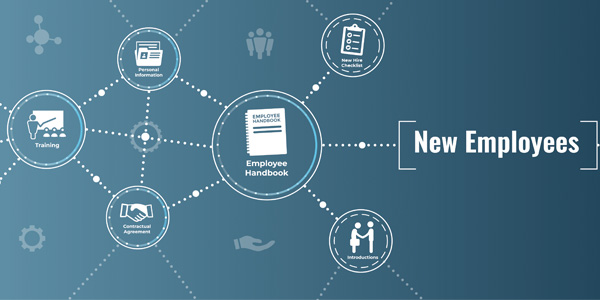There’s a secret to standing out in today’s employee-centric job market, and it isn’t in your brand book. Or your benefits package. Or your kegerator. It’s in your onboarding program.
No period in the employment lifecycle is more important than an employee’s first 90 days on the job. Let’s take a look at the top seven reasons employers should optimize their onboarding programs:
1. Onboarding Can Reduce Turnover (and Turnover Costs)
Turnover is expensive. How expensive? The Society for Human Resource Management (SHRM) estimates that the total cost associated with replacing an employee ranges between 100 and 300 percent of the individual’s salary. We’re not just talking about taking out ads or paying recruiters. When a worker quits, other employees need to pick up the slack, draining the organization of time, energy and resources. Companies that invest in effective onboarding procedures save money by retaining 50 percent of new hires than they would otherwise.
2. Standardized Onboarding Is a Competitive Edge
Fewer vacant jobs also mean higher rates of productivity. When members of your workforce aren’t scrambling to fill positions and juggle multiple roles at once, they can focus entirely on the work in front of them. The result: employees who are happier and more productive — 50 percent more productive to be precise.
3. Onboarding Ensures Workforce Compliance from Day One
Your compliance program is what keeps your business protected, and onboarding is the first step. In broad terms, the compliance training an employee undergoes during onboarding sets the tone for the employee’s experience in the workplace: what kind of conduct is expected, how to interact with customers and team members, and so forth. But equally important are the details. With regulators stepping up audits of I-9 forms and other employment documents, no company can risk taking a non-standardized approach to compliance paperwork.
4. Onboarding Provides New Hires with the Information They Need to Do Their Jobs
Very few people walk into a new job knowing exactly what to do and how to do it. The onboarding process is your opportunity to clarify fundamental expectations, address uncertainties, and answer big questions before they can develop into safety issues and productivity killers.
5. Onboarding Helps Maintain — and Enrich — Organizational Culture
When people are assessing job opportunities, culture makes all the difference. Through onboarding, an organization can clearly demonstrate its mission, values and unique characteristics — at a moment when employees are at their most receptive. Onboarding also shows new hires how they can interact with and influence the culture through their actions and attitudes at work.
6. Onboarding Can Cultivate Teamwork, Mentorship and Leadership
Managers can take a number of concrete steps during the onboarding process to forge powerful, lasting connections with employees. Beyond helping new hires feel acclimated to the workplace, effective onboarding uses the human element to connect employees — new and old — on an emotional, personal level. It’s a crucial way in which managers develop members of their teams, pass along institutional knowledge and plant the seeds for future organizational leaders. Rather than looking for a new job, employees will be motivated to go after roles within the business.
7. Onboarding Keeps Your Managers Accessible and Accountable
When an employee quits, they usually do so because of issues with their immediate boss. The best way to avoid this is through periodic meetings with managers and employees, especially at the outset. In addition to acting as barometers for worker well-being, these check-ins build rapport, provide employees with the chance to offer feedback and keep management accountable.
Although onboarding can seem overwhelming, it isn’t rocket science. To keep your onboarding program simple and aligned with your other workforce processes, follow the five C’s — compliance, clarification, culture, connection and check back — give new hires access to information early and leverage technology wherever you can.














